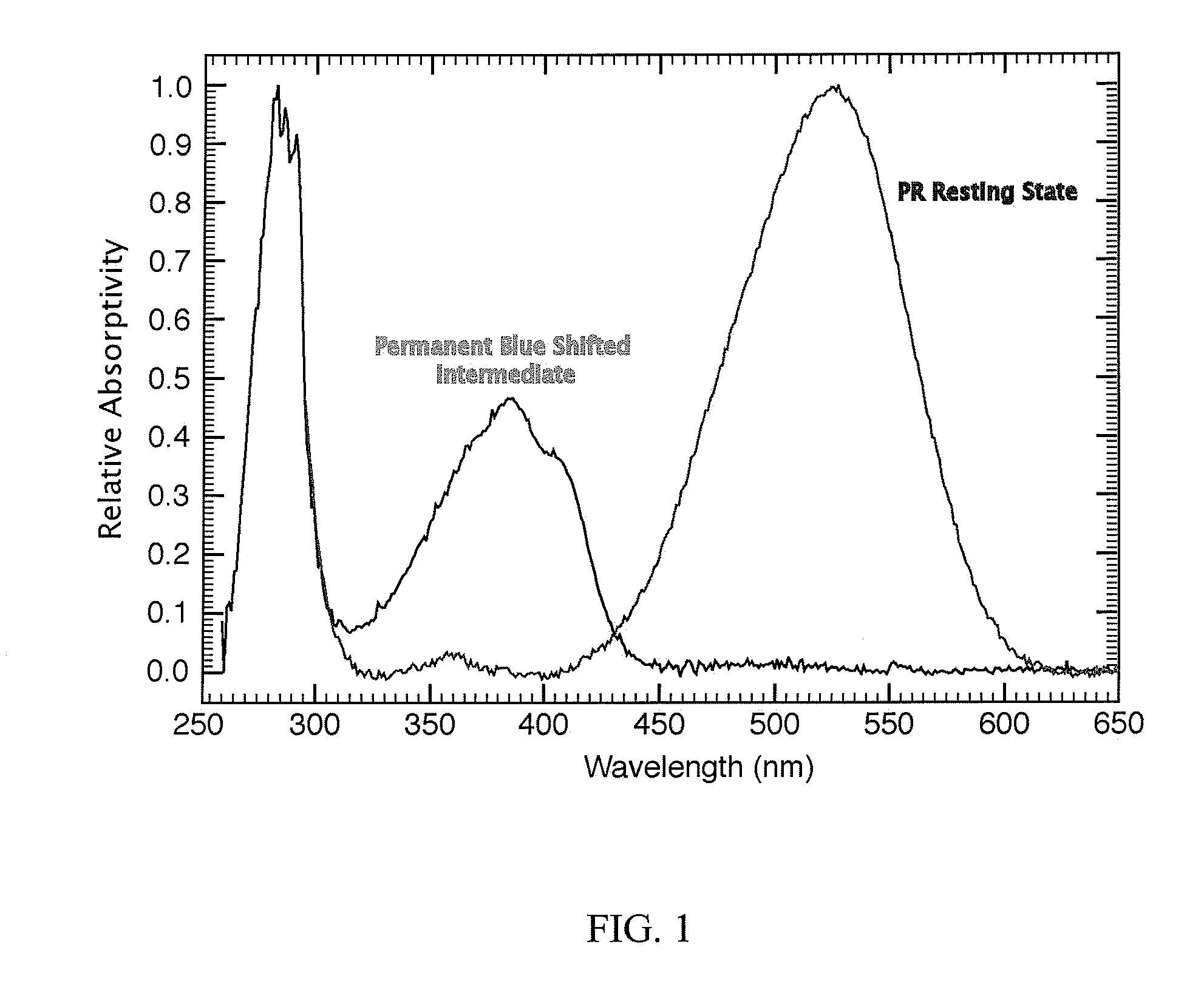Binary Optical Compound and Method of Manufacture
a binary optical compound and optical compound technology, applied in the field of chemical sensing architectures, can solve the problems of not being successfully adapted for commercial use in the field of binary optical compound and manufacturing method, and the transduction mechanism employed inside the organism is not easily adapted to non-biological environments, and achieves the effect of high selectiveness
- Summary
- Abstract
- Description
- Claims
- Application Information
AI Technical Summary
Benefits of technology
Problems solved by technology
Method used
Image
Examples
Embodiment Construction
[0026] Bacteriorhodopsin, or BR, occurs as an integral membrane protein in Halobacterium salinarum, an archaebacterium common in salt marshes where the concentration of sodium chloride is >4M. It is typically isolated from the native organism as patches of purple membrane, consisting of roughly 75% BR & 25% lipid. Its role in nature is to serve as a light to chemical energy transducer by creating a light-induced proton gradient across the cell membrane. This pH gradient is harnessed by the cell to do work. The chromophore responsible for absorption of light by the protein is all-trans retinal, a derivative of Vitamin A, which is bound via a protonated Schiff base to Lys-216. Light induces an all-trans to 13-cis isomerization in the chromophore, followed by a series of thermal protein intermediates characterized by different absorption spectra, vectoral proton transport, and ultimately the reisomerization of the chromophore with consequent re-generation of the bR resting state.
[0027...
PUM
| Property | Measurement | Unit |
|---|---|---|
| rise time | aaaaa | aaaaa |
| quantum efficiency | aaaaa | aaaaa |
| energy | aaaaa | aaaaa |
Abstract
Description
Claims
Application Information
 Login to View More
Login to View More - R&D
- Intellectual Property
- Life Sciences
- Materials
- Tech Scout
- Unparalleled Data Quality
- Higher Quality Content
- 60% Fewer Hallucinations
Browse by: Latest US Patents, China's latest patents, Technical Efficacy Thesaurus, Application Domain, Technology Topic, Popular Technical Reports.
© 2025 PatSnap. All rights reserved.Legal|Privacy policy|Modern Slavery Act Transparency Statement|Sitemap|About US| Contact US: help@patsnap.com

